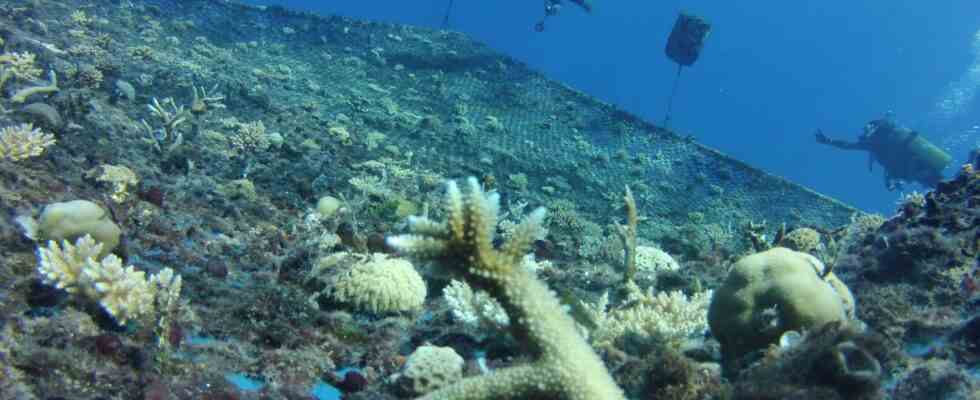Status: 07/04/2022 10:43 a.m
Climate change is threatening the coral reefs of the Indian Ocean. Researchers are therefore growing coral gardens in the sea off the Seychelles to make the reefs more resilient. But that is quite laborious.
Divers slide backwards off the ship’s side. Your boat is moored in the Indian Ocean off the Seychelles. Deep in the water, work awaits the small group here. They are reef savers and want to reforest corals. “We work with so-called super corals,” says Luca Saponari, one of the divers. “These corals have survived over the years while others have died. They are strong and resilient. This is how the reef should recover.”
Much of the coral off the Seychelles was destroyed more than twenty years ago. At that time, the weather phenomenon “El Niño” hit the archipelago and caused the water temperature to rise. The result: a coral bleaching. “Corals live in symbiosis or in partnership with algae. That’s how they get their food,” says Nirmal Shah, chairman of the environmental organization Nature Seychelles. “However, the algae cannot survive at higher water temperatures. The corals lose their colour, they are no longer protected and they die.”
Much of the coral reef off the Seychelles has been destroyed.
Image: ARD Studio Nairobi
“Climate change is causing major damage”
Back on board, Saponari shows how the underwater coral gardens work. Pegs are rammed into the seabed and ropes stretched between them. The reef rescuers attach fragments of coral to the long cords. “We do that about 100 times on each rope,” says Saponari. “This is how the breeding station is created.”
A kind of “coral nursery” under water. The rope courses must be cleaned regularly. The divers take brushes with them. If all goes well, the corals will grow and thrive until they can survive on their own. “Climate change and we as humans who drive CO2 emissions are doing a lot of damage,” says Saponari. “We must do what we can to stop this process. Reef rebuilding is the last chance to save the corals.”
The rope courses with the corals have to be cleaned regularly by the researchers.
Image: ARD Studio Nairobi
“We can only look ahead”
In front of some Seychelles islands, the underwater world has recovered. This means that endangered fish species have a habitat again. The new “super corals” should be better able to withstand future disasters, says environmentalist Shah: “We hope that if the next El Niño comes, our reefs will survive. We can’t turn back time. We can only look ahead.”
That’s why the reef rescuers dive again and again. And try every day to bring back life in the Indian Ocean off the Seychelles.
An underwater “nursery” – reef rescuers grow corals off the Seychelles
Antje Diekhans, ARD Nairobi, July 4, 2022 10:06 a.m

